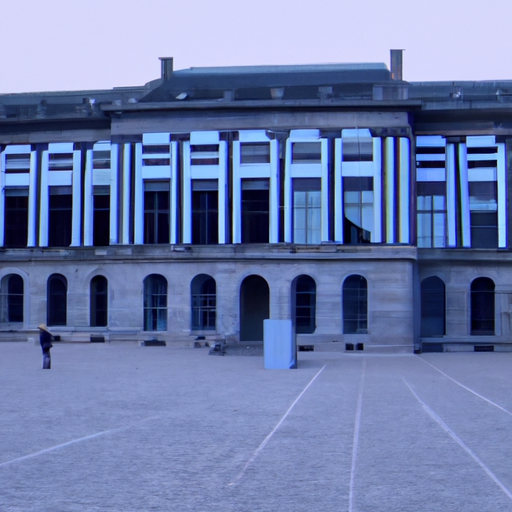-
Table of Contents
Urban Graphics: Capturing City Vibes in Design
Urban graphics play a crucial role in capturing the essence and energy of a city. From street signs and billboards to graffiti and murals, these visual elements shape the identity and character of urban environments. In this article, we will explore the significance of urban graphics in design and how they contribute to the overall vibe of a city.
The Power of Visual Communication
Visual communication is a powerful tool that can convey messages and evoke emotions without the need for words. In urban environments, where people are constantly bombarded with information, effective visual communication becomes even more important. Urban graphics serve as a means to cut through the noise and capture the attention of passersby.
One of the key advantages of urban graphics is their ability to convey information quickly and efficiently. For example, street signs and wayfinding graphics help pedestrians navigate through the city, ensuring they reach their destinations without confusion. These graphics are designed to be easily understood at a glance, using clear symbols and minimal text.
Moreover, urban graphics have the power to create a sense of place and identity. They reflect the unique characteristics of a city, its culture, and its people. By incorporating local elements and themes into the design, urban graphics can foster a strong connection between residents and their surroundings.
Inspiration from Street Art
Street art has become an integral part of urban graphics, transforming cities into open-air galleries. Artists use walls, buildings, and public spaces as their canvas, creating visually stunning and thought-provoking artworks. Street art not only adds vibrancy and color to the urban landscape but also challenges traditional notions of art and public space.
One of the most famous examples of street art is Banksy, a pseudonymous British artist known for his politically charged and socially conscious artworks. His stenciled graffiti pieces have appeared in cities around the world, sparking conversations and inspiring other artists.
Street art has also become a tool for urban regeneration. Many cities have embraced street art as a means to revitalize neglected areas and attract tourists. The Wynwood Walls in Miami, for instance, transformed a once run-down neighborhood into a thriving arts district. The colorful murals and graffiti-covered walls have become a major tourist attraction, drawing visitors from all over the world.
Typography in Urban Graphics
Typography plays a crucial role in urban graphics, as it helps convey messages and set the tone of a design. Different typefaces can evoke different emotions and associations, allowing designers to create a specific atmosphere or vibe.
For example, bold and sans-serif typefaces are often used in urban graphics to convey a sense of strength and modernity. These typefaces are commonly seen in street signs, billboards, and advertisements, where legibility and impact are essential.
On the other hand, script and hand-drawn typefaces can add a touch of creativity and playfulness to urban graphics. They are often used in street art and murals to create a more organic and artistic feel.
Case Study: New York City Subway
The New York City subway system is an iconic example of how urban graphics can shape the identity of a city. The subway’s visual language, including its iconic round subway signs and colorful subway maps, has become synonymous with New York City.
The subway signs, designed by Massimo Vignelli in the 1960s, feature a simple yet bold design. The white-on-black color scheme and the use of Helvetica typeface create a timeless and easily recognizable aesthetic. These signs have become an integral part of the city’s visual landscape, guiding millions of commuters and tourists every day.
The subway map, designed by Michael Hertz in the 1970s, revolutionized the way people navigate the city. The map simplified the complex subway system into a clear and easy-to-understand diagram. It used bold colors and straight lines to represent different subway lines, making it easier for commuters to plan their routes.
The Future of Urban Graphics
As cities continue to evolve, so does the role of urban graphics in design. With the rise of digital technology, new opportunities and challenges arise for designers.
Augmented reality (AR) and virtual reality (VR) have the potential to transform the way we experience urban graphics. Imagine walking down a street and seeing virtual artworks and information overlaid on buildings and walls. AR and VR can create immersive and interactive experiences, blurring the line between the physical and digital worlds.
Furthermore, data visualization can play a significant role in urban graphics. By visualizing data such as traffic patterns, air quality, and population density, designers can create informative and engaging graphics that help people understand and navigate the city more effectively.
Key Takeaways
- Urban graphics are essential in capturing the essence and energy of a city.
- Visual communication is a powerful tool that can convey messages and evoke emotions without words.
- Street art has become an integral part of urban graphics, transforming cities into open-air galleries.
- Typography plays a crucial role in urban graphics, setting the tone and creating a specific atmosphere.
- The New York City subway system is an iconic example of how urban graphics shape the identity of a city.
- With the rise of digital technology, new opportunities and challenges arise for urban graphics.
In conclusion, urban graphics are not just decorative elements in a city; they are powerful tools that shape the identity, character, and vibe of urban environments. From street signs and billboards to street art and typography, these visual elements communicate messages, create a sense of place, and capture the unique spirit of a city. As cities continue to evolve, urban graphics will play an increasingly important role in shaping the way we experience and interact with our urban surroundings.
